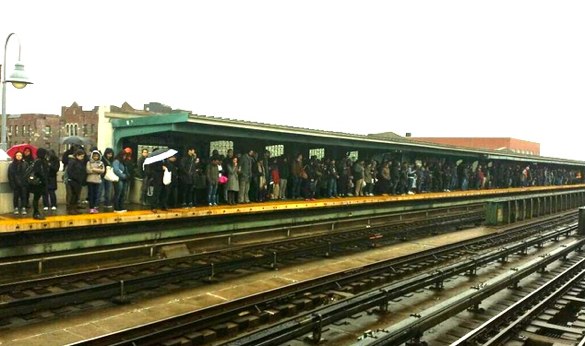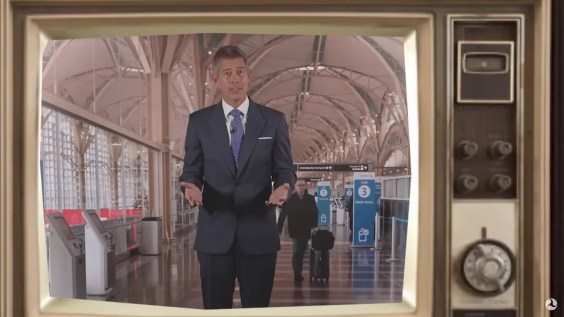I think most transit riders would laugh -- cynically -- at the idea that the MTA has more than enough funds to meet its needs. But this is exactly what the MTA’s chairman Tom Prendergast said when he learned that the state would be diverting $30 million from the MTA’s funding stream to balance the state budget.
“Our needs are being met,” Prendergast said, apparently unwilling to speak out against his boss, Governor Cuomo.
Mayor de Blasio was equally sanguine about this raid on MTA funds. "We have to make sure the MTA has the resources they need. But from what I'm hearing at this point, they're doing well," de Blasio said.
Is this the same MTA that is regularly described in the press as “cash-strapped,” that made deep service cuts in 2009, leaving hundreds of thousands of New Yorkers with longer waits, more crowded platforms, or no local bus route at all?
When asked about the $30 million diversion, an MTA spokesperson noted that the MTA was actually receiving more state funds this year.
Technically he is correct. The state collects a number of taxes and fees that are then sent into a fund that is “dedicated” for transit. The economy is recovering, more tax revenue is coming in, and as a result the pot of transit-dedicated funds is larger than it has been in recent years.
And it’s true that the $30 million diversion represents a small percentage of the MTA’s $13 billion annual budget. One has to appreciate the amount of public funds that do support transit, either from special taxes or state and local general funds. Last year, $5.1 billion in subsidies helped the MTA run the largest transit system in the nation, which is slightly more than it took in at the farebox.
But there are several reasons why the state’s raid on transit funds is bad policy and is fiscally irresponsible.
First, this year’s raid is not an isolated incident but rather comes on top of $280 million in diversions since 2009. Worse, Cuomo intends to take at least $20 million from the state’s transit fund every year until 2031, adding up to another $350 million.
Second, the tax revenue that the MTA relies on is volatile and subject to the ups and downs of the economy. Tax revenue is up this year, but could just as easily drop in the event of the next recession. The MTA should be able to take advantage of the “good times” to prepare for the next recession.
Third, these cuts are especially painful because the MTA is operating at razor-thin margins, with a projected surplus of only $64 million in 2014, dropping to just $4 million by 2015 and a $255 million deficit by 2017.
Keep in mind that Hurricane Sandy cost the MTA $75 million in lost revenue and unplanned expenses in 2012. Clearly such small margins make it difficult or impossible for the MTA to react if a similar unplanned event occurs in the future.
Plus the MTA is in the process of renewing its labor contracts. The authority is assuming, unwisely, that the unions will agree to wage freezes or other concessions. MTA spokesperson Adam Lisberg cautioned “any significant increase in what we have to pay for raises throws our budget out of balance, and will have to be made up for by our customers by higher fares or reduced service.”
Fourth, the MTA is also putting off necessary maintenance and repairs because it could not cobble together enough money for its last capital plan. All told, the MTA needs another $10.5 billion to bring tracks, signals, trains, and stations up to a “state of good repair.”
Support for the MTA’s capital program from the city, state, and federal government has shrunk over the past decade. As a recent study on New York City’s infrastructure reported [PDF], because of these conditions, “the MTA has basically conceded that you will never get to a state of good repair.”
Finally, $30 million taken from the MTA could otherwise be used to improve service or defray fare hikes. New bus routes would ease overcrowding, and more frequent service would improve reliability. The G train could be extended to Forest Hills, or W train service restored between Astoria and Lower Manhattan.
These service increases are relatively inexpensive: The MTA could increase rush hour C train service by 20 percent for about one million a year, or add seven new bus lines in the Bronx for about $4.2 million a year.
All is not OK at the MTA. With surpluses shrinking to deficits, billions in unmet capital needs, and outstanding labor contracts, the MTA is in a very fragile position.
It is clear that state leaders do not want to deal with the problem. In fact, they seem happy to contribute to it. Governor Cuomo has flatly refused to sign a bill that seeks to limit future transit raids by disclosing their impact on the MTA. The fiscally responsible decision would be to pass the bill into law.






